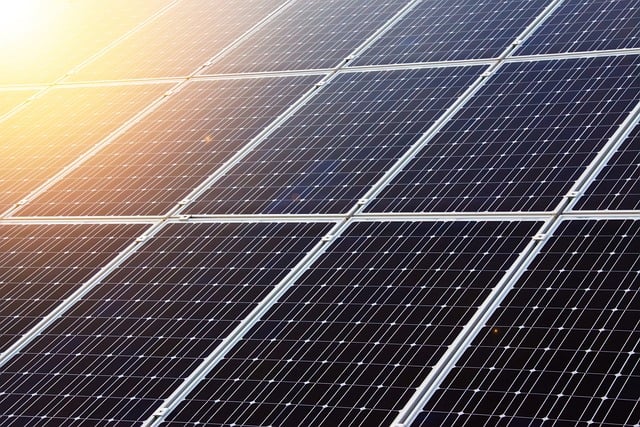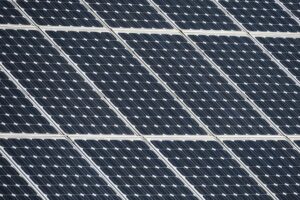From Sunlight to Energy: The Science Behind Solar Panels
As the world continues to grapple with the challenges posed by climate change and dwindling fossil fuel resources, solar energy has emerged as a powerful solution to meet our growing energy demands sustainably. Solar panels, often seen atop homes, businesses, and even in vast solar farms, convert sunlight directly into electricity. But what goes on behind the scenes? In this article, we delve into the science behind solar panels, elucidating how they transform sunlight into usable electrical energy.
The Basic Concept of Solar Energy
Solar energy is derived from the sun’s rays. The sun releases energy in the form of light (photons), and when these photons strike a solar panel, they can create electric currents. This process occurs through several complex mechanisms that involve the principles of physics and chemistry.
Understanding Solar Panels
Solar panels are made up of many individual solar cells, which are the fundamental building blocks of solar technology. Most commercially available solar cells are made from silicon, which is a semi-conductive material. There are two basic types of solar panels: monocrystalline and polycrystalline, which differ in their manufacturing processes and efficiency levels.
The Photovoltaic Effect
The key scientific principle behind solar panels is the photovoltaic (PV) effect. The PV effect describes how certain materials generate an electric current when exposed to light. The steps involved in this process are as follows:
When photons from sunlight strike a solar cell, they may be absorbed by the silicon atoms within the cell. This energy from the photons excites electrons in the silicon, giving them enough energy to break free from their atomic bonds.
Once these electrons are freed, they move towards the electric field created by the junction of two different silicon layers within the solar cell—one that has been doped with phosphorus (n-type) and another with boron (p-type). This electric field directs the flow of free electrons, creating a stream of electric current that can be drawn off for use.
Components of a Solar Panel
A solar panel is not just a simple piece of technology; it’s a complex assembly of various components that work together to convert sunlight into electricity.
Solar Cells
As previously mentioned, solar cells are primarily made from silicon. The design and arrangement of these cells dictate the panel’s overall efficiency. Each cell generates a small amount of power, and together, they create a sufficient amount to be utilized by homes or businesses.
Glass Cover
The glass cover protects the solar cells from environmental factors such as rain, snow, and hail while allowing sunlight to penetrate. The glass is usually treated to enhance transparency and reduce glare, optimizing light absorption.
Frame
Typically made of aluminum, the frame provides structural support to the solar panel, making it durable and long-lasting. It also facilitates easy mounting on rooftops or ground installations.
Back Sheet
The back sheet is a layer that protects the backside of the solar cells from moisture and damage. It is vital for ensuring the longevity of the panel.
Junction Box
The junction box is where the solar cells connect to external circuits. It includes diodes that prevent the reverse flow of electricity, ensuring that the energy harvested is used efficiently.
Types of Solar Panels
While all solar panels utilize the photovoltaic effect, there are different types of solar panels available in the market, each with its own advantages and limitations.
Monocrystalline Solar Panels
Monocrystalline panels are made from single-crystal silicon. They tend to have higher efficiency rates and occupy less space compared to other panel types. Their uniform appearance and performance in low-light conditions make them popular for residential use.
Polycrystalline Solar Panels
Polycrystalline panels are made from multiple silicon crystals melted together. They are generally less efficient than monocrystalline panels but are more affordable. Their distinctive blue speckled look is easily recognizable.
Thin-Film Solar Panels
Thin-film panels are made by layering photovoltaic materials on a substrate, such as plastic or glass. These panels are lightweight and flexible, making them suitable for unconventional applications. However, they typically have lower efficiency rates than crystalline panels.
Solar Panel Efficiency
Efficiency is a crucial factor when evaluating solar panels. It refers to the percentage of sunlight that can be converted into usable electricity. Various factors affect the efficiency of solar panels, including:
– Type of material used in solar cells
– Temperature; higher temperatures can lead to lower efficiency
– Angle and orientation of the solar panels
– Shading from trees, buildings, or other structures
The Role of Inverters
Solar panels generate direct current (DC) electricity, but most homes use alternating current (AC) electricity. This is where the inverter comes into play. The inverter converts the DC electricity produced by the solar panels into AC electricity, making it suitable for domestic use. There are different types of inverters, including string inverters, microinverters, and power optimizers, each offering specific benefits depending on the installation setup.
Storage Solutions: Batteries and Net Metering
One of the significant challenges of solar energy is its intermittent nature—solar panels only produce electricity when the sun is shining. To address this, homeowners and businesses may invest in battery storage systems to store excess electricity produced during the day for use at night or during cloudy periods.
Another solution is net metering, which allows solar panel owners to sell excess electricity back to the grid. This way, users can receive credits that offset their electric bills, enabling them to benefit from their solar investment even when the sun isn’t shining.
The Future of Solar Technology
The solar industry is continuously evolving, with research and development paving the way for improved technology. Innovations such as bifacial solar panels, which capture sunlight from both sides, and solar roofing tiles, which integrate solar technology directly into roofing materials, are becoming more common.
Furthermore, researchers are investigating alternative materials, like perovskite solar cells, which may offer higher efficiency rates and lower production costs compared to traditional silicon cells.
Environmental Impact and Economic Benefits
The transition to solar energy holds significant promise for environmental sustainability. Solar power reduces reliance on fossil fuels, thus diminishing greenhouse gas emissions and air pollutants. In addition, the installation of solar panels can create jobs in manufacturing, installation, and maintenance, contributing to local economies.
Conclusion
Solar panels represent a remarkable fusion of science and technology, transforming sunlight into clean energy and offering a sustainable alternative to fossil fuels. Understanding the intricacies of solar energy generation allows us to appreciate its role in addressing the environmental challenges we face today. As technology continues to advance and the costs of solar installations decrease, the adoption of solar energy will likely become an increasingly vital part of our energy landscape.





